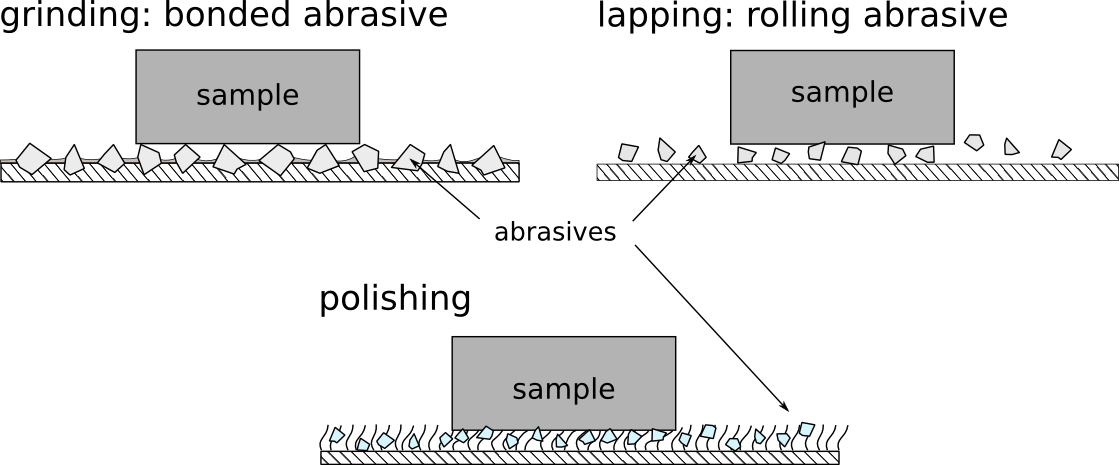how to do slag microscopy – sample lapping

These are the main modes of material removal from a sample.
This is part five of the series on slag microscopy and deals with sample lapping. In the lapping process samples are also ground, but with fine abrasive powders. The abrasive grains can roll between the sample surface and the lapping disc. The section receives a dull finish. Lapping is especially effective in maintaining the flatness of the samples and and edge definition of samples consisting of composite materials with hard and soft components .
For this we need:
- lapping disc or a 20 by 30 cm piece of 8 mm flat glass
- abrasive SiC powder, e.g. FEPA F800 (ca 6.5 microns)
Sample lapping?
I found that one lapping step between grinding and polishing resulted in better polished sections. It allows allows you to stop grinding after paper grit 1200. This step is very simple to do manually and does not take long:
Squirt a smallish amount of water on your glass lapping plate. Put a small amount, e.g. half a teaspoon, of F800 SiC powder near the water puddle. Now use the sample to draw in some SiC powder into the water and move the sample block in a figure eight motion across the glass plate, drawing in more abrasives as you go along. During lapping the abrasive grains will break down to smaller particles and produce a finer and finer surface. You can see this effect when compare the sample surface that was lapped with fresh abrasive with one that was lapped with old abrasive that was used for a longer period of time. The surface lapped with the old abrasive will be finer.
Lapping does remove less material than grinding. You can,, however, determine the material removal rate by the ratio water to abrasive powder, i.e. the viscosity of the lubricant film. The thicker the film, the less material is removed. If your film gets too thick, the sample will only slip across the plate. If it too thin the sample will get stuck on your plate due to strong adhesive forces.
You will develop a feeling for this process rather quickly. You can also hear it, if material is removed or not…
Recap
- Lapping is a simple, optional step
- it may shorten prep time, because you do not need to use the finest grinding steps
- maintains flatness and edge definition
- removes linear scratches resulting from grinding






February 26th, 2014 at 15:14
[…] slag microscopy course. After sample prep, with find documentation, cutting, mounting, grinding, lapping and polishing we are now going to have a look at the tool to be used for the next sessions: the […]